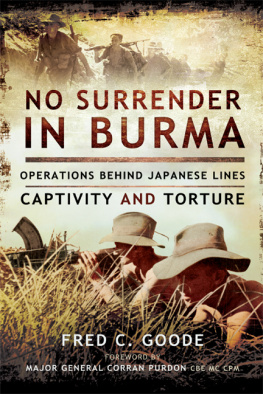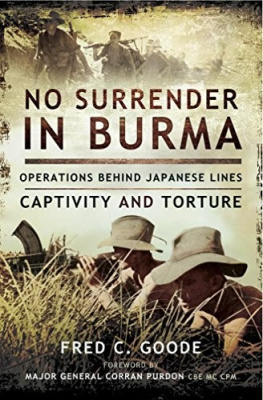
Copyright 2014 by Richard Dunlop
All Rights Reserved. No part of this book may be reproduced in any manner without the express written consent of the publisher, except in the case of brief excerpts in critical reviews or articles. All inquiries should be addressed to Skyhorse Publishing, 307 West 36th Street, 11th Floor, New York, NY 10018.
Skyhorse Publishing books may be purchased in bulk at special discounts for sales promotion, corporate gifts, fund-raising, or educational purposes. Special editions can also be created to specifications. For details, contact the Special Sales Department, Skyhorse Publishing, 307 West 36th Street, 11th Floor, New York, NY 10018 or info@skyhorsepublishing.com.
Skyhorse and Skyhorse Publishing are registered trademarks of Skyhorse Publishing, Inc., a Delaware corporation.
Visit our website at www.skyhorsepublishing.com.
10 9 8 7 6 5 4 3 2 1
Library of Congress Cataloging-in-Publication Data is available on file.
ISBN: 978-1-62636-538-4
eISBN: 978-1-62873-897-1
Printed in the United States of America
CONTENTS
List of Maps
Preface
To many readers the following account of the guerrilla war fought against the Japanese army in the jungled mountains of North Burma during World War II will seem as brutal as a pungyi stick thrust into the entrails. But it is the truth of the matter, as told to me by my fellow members of Office of Strategic Services Detachment 101 and as I myself remember it. Sometimes the story is grim and disturbing, sometimes errant and whimsical, deeply sad and tragic, brave and noble, often it is outrageous, humorous, or downright repulsivebut that is the way things were in the Southeast Asian jungles.
I have chosen a narrative style that seems suited to this type of candid history and to the irregular warfare waged behind the Japanese lines by Detachment 101. I have left the more linear approach to the war in Burma to the armchair historians and the political and strategic complexities of the China-Burma-India Theater to scholars. I have presented the big picture of the CBI Theater only when it is necessary for an understanding of the OSS mission in Burma.
The Official History of Detachment 101 as jointly prepared by Detachment 101 and the G-2 Section of the Northern Combat Area Command states that the detachment:
was given the two-fold assignment of espionage and guerrilla warfare in Japanese-occupied Burma. Such an assignment presented staggering difficulties. The country represents the densest kind of jungle terrain and for half the year is rain-sodden and malaria-infested. The Japanese, jungle-wise, made full use of the abundant natural cover; they confined their movement almost entirely to night marches; and employed illogical courses of action to conceal their whereabouts and intentions. A final difficulty is the conspicuousness of white agents in an oriental country. Under such natural conditions, and against such an enemy, the organization of an army of partisans and agents chosen from among the inhabitants of the country, offered advantages without which the mission could not be accomplished.
In telling the story of Detachment 101 I have tried to give the reader an understanding of the Kachin people who provided most of the partisans and many of the agents and to show why they responded as they did to the Japanese invasion of their homeland. The jungle war that I describe was their war of self-defense and revenge. OSS men could have accomplished very little without them. I have endeavored to bring alive for readers not only the Kachin people but the leeches, the kraits and cobras, the tigers and even weretigers, the heat of the lowland valleys and the cold of the high Himalayan foothills.
The reader should not expect a Kachin jaiwa telling his story around a campfire on a mountainside to have the mental attributes of an Oxford don and should keep in mind that the Kachins and Americans who lived through the experience had no idea at the time that they were making history. In the light of subsequent events in Southeast Asia and of events in Asia yet to happen, the partnership in warfare between the Kachins and Americans, their life together and their friendship and affection for one another, should have great meaning for people in both the East and the West who find it hard to accept the universality of human nature, which can bring together very different peoples in a common venture for their mutual salvation.
My own involvement with the OSS began at Camp Gruber, Oklahoma, when I was summoned out of the field while on maneuvers with my regiment of the 42nd Rainbow Division. The officers crisp Washington uniform contrasted with my muddy clothing. He glanced at my dossier open before him, asked a few desultory questions and then demanded, Would you be willing to undertake a dangerous mission behind enemy lines?
It seemed right out of any number of adventure movies Id seen as a kid, but theatrical as it might appear, it was also plain that the man, who I later learned was from the Office of Strategic Services, was serious enough.
Yes, sir, I said, having learned the proper response at the age of twelve at matinees in neighborhood movie theaters back home in Illinois.
Within two weeks I was in Washington, and when my security check was completed, I was put through training, which ranged from cryptography and cryptoanalytics at the OSS headquarters to unorthodox combat techniques in the secret camps in Virginia and Maryland. I met my first 101 man at the Virginia camp. Back from the Burma jungles, he was one of my instructors, and he distinguished himself by drinking all the shaving lotion in the barracks one morning. He also was a very competent teacher.
When I went through the OSS psychological testing program, I was told at my final interview that I showed a remarkable aptitude for living for long periods with people of another culture and race. Therefore I was not surprised when I was asked to commence Chinese language classes instead of continuing my training for a probable assignment in Europe.
Finally, with five other OSS men detailed for China, I was sent by ship to India. In Calcutta each of us was interviewed by a representative of Detachment 101 and asked if we would be willing to go to Burma instead of China. The 101 man that I had met in training camp in Virginia had impressed me, and I readily agreed to go to Burma. I flew to Chabua, Assam, and was met by an Anglo-Burmese driver in a jeep, who drove me through the jungles, wet with monsoonal rain, to Nazira. That night as I fell asleep in a tent on the periphery of a tea garden I heard my first tigers coughing roar across the Dikho River. From that moment on I was proud to be a part of Detachment 101. It was autumn, 1944.
In a few weeks I had completed my indoctrination at Nazira, flew to Myitkyina, and soon afterwards went on to the area of Bhamo in a 101 light plane. From that airstrip I walked the rest of the way into the field. At no time did my experiences, fascinating as they were to me, prove either as exciting or as significant as those of many of my fellow 101 men, but I was privileged to be an observer who, with the sensitivity and awareness of a young man who was intended by life to become an author, was to learn firsthand the story of the Kachin people and their extraordinary partnership with the Americans and British of the OSS.
Acknowledgments
The author is indebted to the three commanders of Detachment 101 of the Office of Strategic Services, Colonel Carl Eifler, Colonel John Coughlin, and Lieutenant General William Raymond Peers. Each in his own distinctive way proved both an inspiration and a rich source of information for the book. General Peers very generously offered both his manuscript on the OSS in Burma and his personal collection of photography for my consideration. The late Major General William J. Donovan, the Director of the Office of Strategic Services, also was a much valued contributor to my understanding of the subject.
Next page










